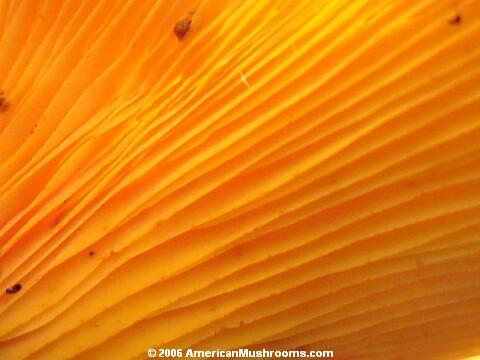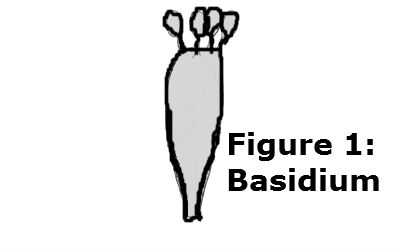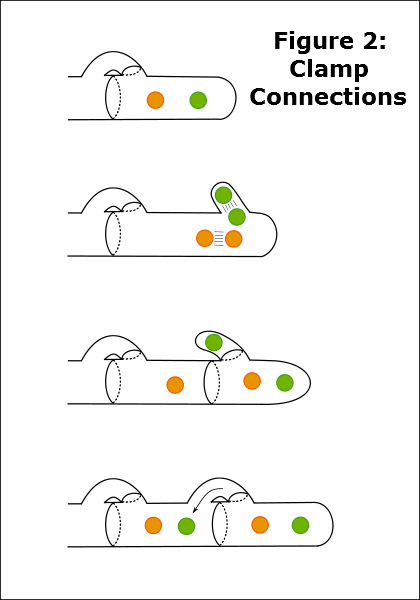Reproduction
As humans, we are naturally driven to find a mate. Typically
at the beginning of early adulthood, the search for a match
begins. At the beginning of this search, a sign that you
hav e met your match could be the connection you feel when he
asks you to the camp dance. Another person may know it’s the
one when their partner shares a common interest in
chickens. Whatever it may be, we all have specific
criteria for determining compatibility. Fungi use genetic
codes instead of social cues in order to know when they have
met their mate. While a love of chickens may be a standard
for a human, a specific allele is a standard for a fungus. A
mating type locus, sometimes simplified as MAT, is the gene
that controls the mating identity for fungi. Omphalotus
olearius undergoes a unique process called tetrapolar
mating. The opposite of this process is b
e met your match could be the connection you feel when he
asks you to the camp dance. Another person may know it’s the
one when their partner shares a common interest in
chickens. Whatever it may be, we all have specific
criteria for determining compatibility. Fungi use genetic
codes instead of social cues in order to know when they have
met their mate. While a love of chickens may be a standard
for a human, a specific allele is a standard for a fungus. A
mating type locus, sometimes simplified as MAT, is the gene
that controls the mating identity for fungi. Omphalotus
olearius undergoes a unique process called tetrapolar
mating. The opposite of this process is b ipolar mating.
Bipolar mating utilizes 1 locus, while tetrapolar mating
utilizes 2 loci. In order for the two mating types to be
sexually compatible during tetrapolar mating, the 2 strains
need to have different alleles at both loci. The number of
mating types varies with each organism that possesses this
trait. Omphalotus olearius is known to have
hundreds of mating types. (Ni et al. 2011) The purpose of
having mating types is so that a fungi can determine
sexually compatible mates, since they don’t have sexual
differentiation. The advantage for having a large number of
mating types is to increase chances of finding a compatible
mate. Also, it creates genetic diversity in a population.
Genetic diversity helps organisms to have a better chance of
survival. For example, consider that there is a bacteria
infecting mushrooms with a type A gene. If there are both
type A genes and type B genes, then the type A gene will be
affected while the type B gene will not. In contrast, if all
of the mushrooms were simply type A, then the bacteria will
affect them all. O. olearius has even shown to possess the
skill to allow opposite mating types the ability to
reproduce and mate when environmental stressors are present.
(Ni et al. 2011)
ipolar mating.
Bipolar mating utilizes 1 locus, while tetrapolar mating
utilizes 2 loci. In order for the two mating types to be
sexually compatible during tetrapolar mating, the 2 strains
need to have different alleles at both loci. The number of
mating types varies with each organism that possesses this
trait. Omphalotus olearius is known to have
hundreds of mating types. (Ni et al. 2011) The purpose of
having mating types is so that a fungi can determine
sexually compatible mates, since they don’t have sexual
differentiation. The advantage for having a large number of
mating types is to increase chances of finding a compatible
mate. Also, it creates genetic diversity in a population.
Genetic diversity helps organisms to have a better chance of
survival. For example, consider that there is a bacteria
infecting mushrooms with a type A gene. If there are both
type A genes and type B genes, then the type A gene will be
affected while the type B gene will not. In contrast, if all
of the mushrooms were simply type A, then the bacteria will
affect them all. O. olearius has even shown to possess the
skill to allow opposite mating types the ability to
reproduce and mate when environmental stressors are present.
(Ni et al. 2011)
Omphalotus olearius is a Basidiomycete meaning that
its spores are produced externally on a basidium. In the
picture to the right, you can observe the gills that are
found on the underside of the mushrooms cap. On each gill
there are many basidia clumped in a collection called a basidiocarp. Figure 1 shows the structure of the basidium.
The spores on a basidium are called basidiospores. You can
notice that the spores are found on the outside of the
structure, therefore are found externally. This is a
defining characteristic of the Basidiomycota.
collection called a basidiocarp. Figure 1 shows the structure of the basidium.
The spores on a basidium are called basidiospores. You can
notice that the spores are found on the outside of the
structure, therefore are found externally. This is a
defining characteristic of the Basidiomycota.
Another defining characteristic of the Basidiomycota is
their clamp connections. As previously mentioned,
Basidiomycetes use spores to reproduce. However, the
fruiting body, the basidiocarp, is just what is seen above
the surface. The basidiocarp is the mushroom structure that
you see. It is not
 the growth form, and is only for
reproduction and spore dispersal. Below the surface, the hyphae are working to decompose matter and expand. Hyphae
are structures which excrete enzymes to break down material
and allow the fungus to grow. Clamp connections are found on
the hyphae of Basidiomycetes. Figure 2 shows the basic
process of clamp connections. During this process, two
nuclei undergo mitotic division. One of the daughter cells
from each nuclei is taken by the clamp and the other
progresses forward. The two remaining nuclei are separated
by a septum. This process of clamp connections is necessary
to create genetic diversity. Read more about this process on
my Interactions with species page.
the growth form, and is only for
reproduction and spore dispersal. Below the surface, the hyphae are working to decompose matter and expand. Hyphae
are structures which excrete enzymes to break down material
and allow the fungus to grow. Clamp connections are found on
the hyphae of Basidiomycetes. Figure 2 shows the basic
process of clamp connections. During this process, two
nuclei undergo mitotic division. One of the daughter cells
from each nuclei is taken by the clamp and the other
progresses forward. The two remaining nuclei are separated
by a septum. This process of clamp connections is necessary
to create genetic diversity. Read more about this process on
my Interactions with species page.
A collection of hyphae are formed into a mycelium. The mycelium is the growth form for the fungus. They are what produce the basidiocarps. A process called karyogamy occurs in each basidium. This is when two nuclei fuse and produce a diploid nucleus. The diploid nucleus then undergoes meiosis and produces four haploid nuclei that develop into basidiospores. The spores are borne on the basidium until they reach maturity, and then are dispersed into nature by wind. The Jack O’Lantern Mushrooms cap is rounded down completely at immaturity. As the mushroom matures, the cap opens so that by the time it has reached full maturity, the gills are fully exposed. This is to create the best possible chance for the spores to disperse.
Take a look at the image below to see the entire life cycle drawn out. One thing to note is that Basidiomycota are independent of water, meaning that they don’t need water to reproduce. This is in comparison to Curly Leaf Pondweed which is water dependent.
.png)